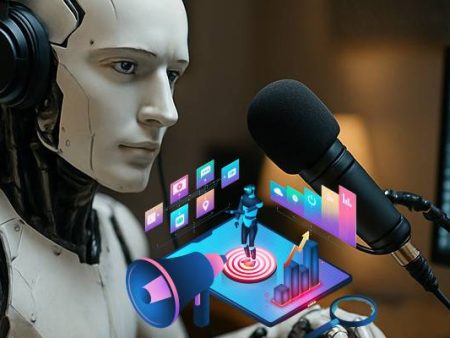When you think about accessibility, your mind probably goes straight to ramps, braille, or screen readers. But here’s the truth: voices matter just as much.
For millions of people around the world who are blind or visually impaired, the voice of a device isn’t just a convenience—it’s a lifeline.
Voices guide, inform, comfort, and sometimes even frustrate. The way a voice sounds can make the difference between a smooth experience and a disjointed one.
And now, with AI-powered voice generation stepping into the spotlight, there’s a chance to give people not just functional assistance but a more natural experience that respects dignity, emotion, and individuality.
But this isn’t a simple fairy-tale story. There are hurdles, ethical tangles, and a constant between race giants voice—big tech companies fighting to dominate this space.
So, how do we balance innovation with empathy? And more importantly, how do we ensure that this technology truly serves those who need it most?
The Scope of the Challenge
According to the World Health Organization, at least 2.2 billion people worldwide have a vision impairment or blindness. Out of that number, at least 1 billion cases could have been prevented or have yet to be addressed.
In the U.S. alone, the National Federation of the Blind estimates that over 7 million adults live with visual impairments. For these individuals, technology isn’t a luxury—it’s a necessity. Digital accessibility tools bridge gaps in education, work, and everyday life.
So, when AI-generated voices promise to deliver smoother, more natural experiences, we’re not just talking about convenience. We’re talking about empowerment, independence, and human dignity.
The Evolution of Voices in Tech
We’ve come a long way since robotic, monotone screen readers. Anyone who remembers the early days of Microsoft Sam or basic text-to-speech systems knows how clunky they sounded. They got the job done, sure, but there was no warmth, no empathy, no connection.
Now, AI has changed the game. Neural networks and deep learning allow voices to mimic real human intonation, rhythm, and even subtle emotional cues. Think of Amazon Polly or Microsoft Azure Cognitive Services. These tools don’t just speak; they express.
For the visually impaired, that leap from robotic to human-like is huge. A more natural experience means longer listening sessions without fatigue, better comprehension, and even emotional comfort.
Voices Exploring Cultural Context
Accessibility isn’t just about making information available—it’s about making it meaningful. That’s where voices exploring cultural context comes in.
Imagine being able to choose a voice that doesn’t just sound human but sounds familiar, rooted in your own background.
A student in New York could study with a voice that reflects her Dominican heritage, while a professional in Texas might choose a voice with a soft Southern cadence.
This goes beyond aesthetics. Cultural accents can foster connection, belonging, and trust. The danger, of course, is appropriation—using synthetic voices without respecting the communities they’re modeled on.
But when done ethically, this could be one of the most powerful expansions of accessibility in years.
From Ads to Everyday Life
One of the most fascinating dynamics is how technology developed from ads and marketing is now finding a home in accessibility.
Brands have been early adopters of AI voices, personalizing campaigns to sound friendlier, warmer, and more persuasive.
Think of those tailored Spotify ads or retail voice assistants that feel oddly conversational. While the motives there are commercial, the tech itself—polished, dynamic, and flexible—translates beautifully to accessibility tools.
This crossover raises an important question: should accessibility always be an afterthought, piggybacking off commercial innovation? Or should it be a primary focus from the ground up? Personally, I’d argue for the latter. Voices for ads might aim to sell, while voices for accessibility should aim to serve.
The Grey Zone: Ethics and Trust
Let’s talk about the voices grey zone—that murky space between helpful innovation and potential exploitation.
AI voice tech can do incredible things, but it also brings risks:
- Privacy concerns: When a system is constantly listening, how do we ensure data isn’t misused?
- Consent: If synthetic voices are based on recordings of real people, were those people compensated fairly?
- Authenticity: Do we blur the line too much between machine and human, making it harder to know who—or what—we’re listening to?
For the visually impaired, trust is critical. If a voice assistant reads out financial data, navigates healthcare decisions, or offers guidance in emergencies, that voice must be reliable. Any breach of trust, and the system collapses.
The Role of Big Tech: A Race Between Giants
There’s no denying it: accessibility is also caught in the between race giants voice—the competition between tech behemoths like Google, Amazon, Apple, and Microsoft.
Each company has its own ecosystem, its own voice assistants, and its own ambitions. For users, this competition can feel like both a blessing and a curse.
On the one hand, the competition drives rapid innovation. On the other hand, it can fragment accessibility tools, forcing users to juggle multiple platforms.
The dream scenario? Collaboration instead of rivalry. Imagine a world where accessible AI voices are standardized, portable, and universally usable across devices. That would be a revolution.
Real-World Applications: Beyond the Hype
Education
Students who are visually impaired can access textbooks, research papers, and notes through AI voice systems that sound less like machines and more like compassionate teachers. The difference between robotic monotones and empathetic voices can make studying less of a chore and more of a dialogue.
Work
Professionals can dictate, write, and edit documents with smoother AI voice feedback. Meetings transcribed in real-time with natural voices mean more inclusion in workplace collaboration.
Everyday Life
From reading recipes aloud in the kitchen to narrating novels during downtime, AI voices transform ordinary tasks into experiences that feel seamless and human.
Statistics and Trends
- According to MarketsandMarkets, the global text-to-speech market size is projected to reach $7.6 billion by 2028, driven largely by accessibility applications.
- The American Foundation for the Blind reports that employment rates for visually impaired adults remain significantly lower than average, but technology is a key enabler in narrowing this gap.
These numbers underscore the urgency—and potential—of making AI voice tools more natural, accessible, and empathetic.
My Take: More Than Just Tech
I’ll be honest—when I hear about AI voice technology, part of me geeks out about the innovation. But another part of me thinks about the people.
I think about someone’s grandmother who lost her vision late in life, struggling with isolation until a voice assistant gave her back independence.
I think about students navigating online classes who can finally keep pace because the AI voice doesn’t just bark information but explains it with rhythm and care.
Technology often gets celebrated for its efficiency. But in this case, the real victory is humanity.
Conclusion: A Voice Worth Hearing
AI voice generation is more than a shiny tech trend. For the visually impaired, it’s an opportunity to build a richer, more independent life. But it’s also a test for all of us—are we designing with empathy, or just chasing profit?
As big tech continues its between race giants voice, as developers push boundaries with voices exploring cultural contexts, and as innovation flows from ads into accessibility, we need to tread carefully.
The voices grey zone is real, and ignoring it risks alienating the very people this technology should uplift.
The goal isn’t just to make AI voices sound human. The goal is to make them feel human—warm, trustworthy, and empowering. If we get that balance right, then maybe we’ll finally have technology that doesn’t just speak to us but speaks with us.


